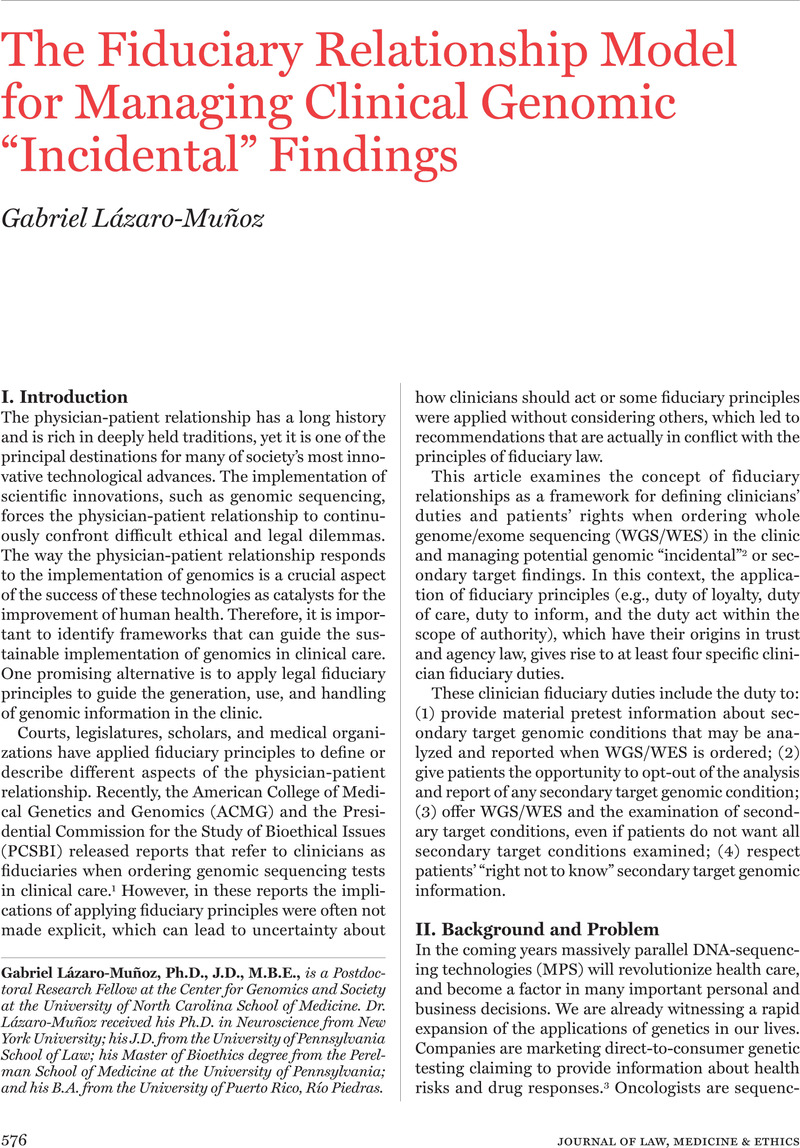Crossref Citations
This article has been cited by the following publications. This list is generated based on data provided by Crossref.
Lázaro-Muñoz, Gabriel
Conley, John M.
Davis, Arlene M.
Van Riper, Marcia
Walker, Rebecca L.
and
Juengst, Eric T.
2015.
Looking for Trouble: Preventive Genomic Sequencing in the General Population and the Role of Patient Choice.
The American Journal of Bioethics,
Vol. 15,
Issue. 7,
p.
3.
Lázaro-Muñoz, Gabriel
Conley, John M.
Davis, Arlene M.
Van Riper, Marcia
Walker, Rebecca L.
and
Juengst, Eric T.
2015.
Response to Open Peer Commentaries on “Looking for Trouble: Preventive Genomic Sequencing in the General Population and the Role of Patient Choice”.
The American Journal of Bioethics,
Vol. 15,
Issue. 12,
p.
W6.
Su, Xiaowei
Kang, Peter B.
Russell, James A.
and
Simmons, Zachary
2016.
Ethical issues in the evaluation of adults with suspected genetic neuromuscular disorders.
Muscle & Nerve,
Vol. 54,
Issue. 6,
p.
997.
Juengst, Eric
McGowan, Michelle L.
Fishman, Jennifer R.
and
Settersten, Richard A.
2016.
From “Personalized” to “Precision” Medicine: The Ethical and Social Implications of Rhetorical Reform in Genomic Medicine.
Hastings Center Report,
Vol. 46,
Issue. 5,
p.
21.
Char, Danton S.
Lázaro-Muñoz, Gabriel
Barnes, Aliessa
Magnus, David
Deem, Michael J.
and
Lantos, John D.
2017.
Genomic Contraindications for Heart Transplantation.
Pediatrics,
Vol. 139,
Issue. 4,
Kaiwar, Charu
McAllister, Tammy M.
Lazaridis, Konstantinos N.
and
Klee, Eric W.
2017.
Preemptive sequencing in the genomic medicine era.
Expert Review of Precision Medicine and Drug Development,
Vol. 2,
Issue. 2,
p.
91.
Lázaro-Muñoz, G
Farrell, M S
Crowley, J J
Filmyer, D M
Shaughnessy, R A
Josiassen, R C
and
Sullivan, P F
2018.
Improved ethical guidance for the return of results from psychiatric genomics research.
Molecular Psychiatry,
Vol. 23,
Issue. 1,
p.
15.
Kerkonian, Aram Daniel
2021.
Space Regulation in Canada: Past, Present and Potential.
p.
151.
Stratton, Timothy P.
and
Olson, Anthony W.
2023.
Personalizing Personalized Medicine: The Confluence of Pharmacogenomics, a Person’s Medication Experience and Ethics.
Pharmacy,
Vol. 11,
Issue. 3,
p.
101.
Nortje, Nico
Palmer, Amitabha
Enck, Gavin
Masciari, Christopher Frank
Neumann, Joyce
and
Gallagher, Colleen Mary
2024.
Evolving Landscape of Ethics in Oncology: A Journey Through the Past, Present, and Future.
American Society of Clinical Oncology Educational Book,
Vol. 44,
Issue. 3,





